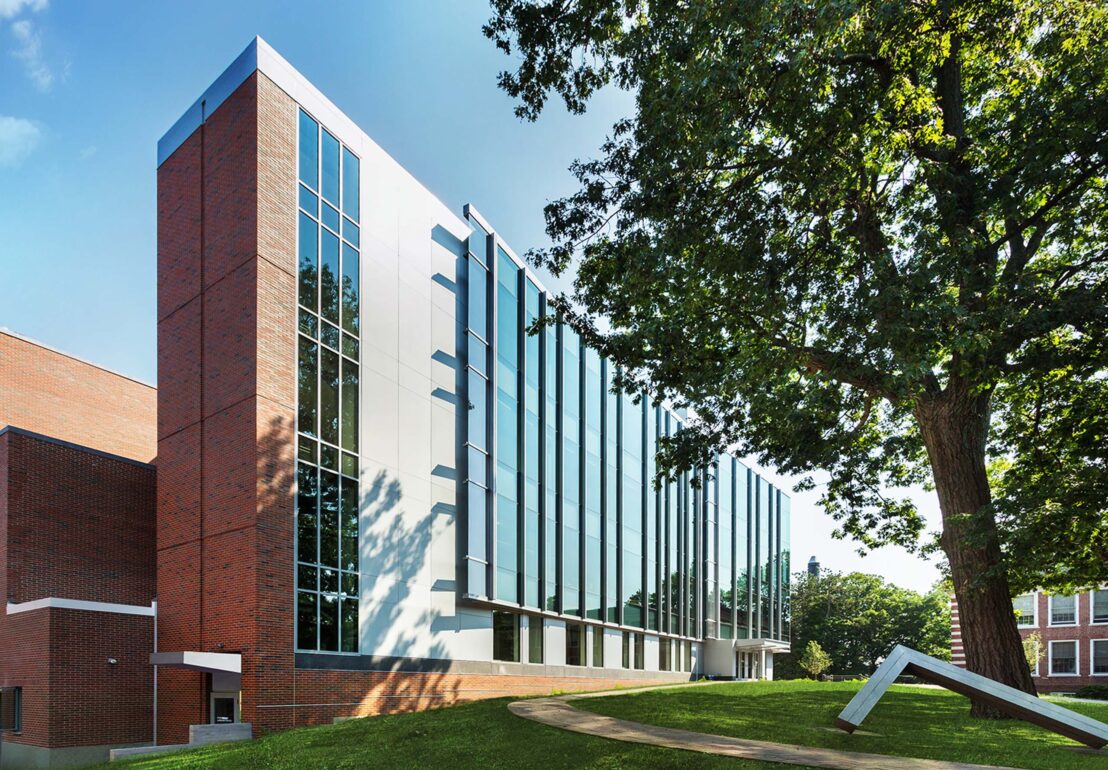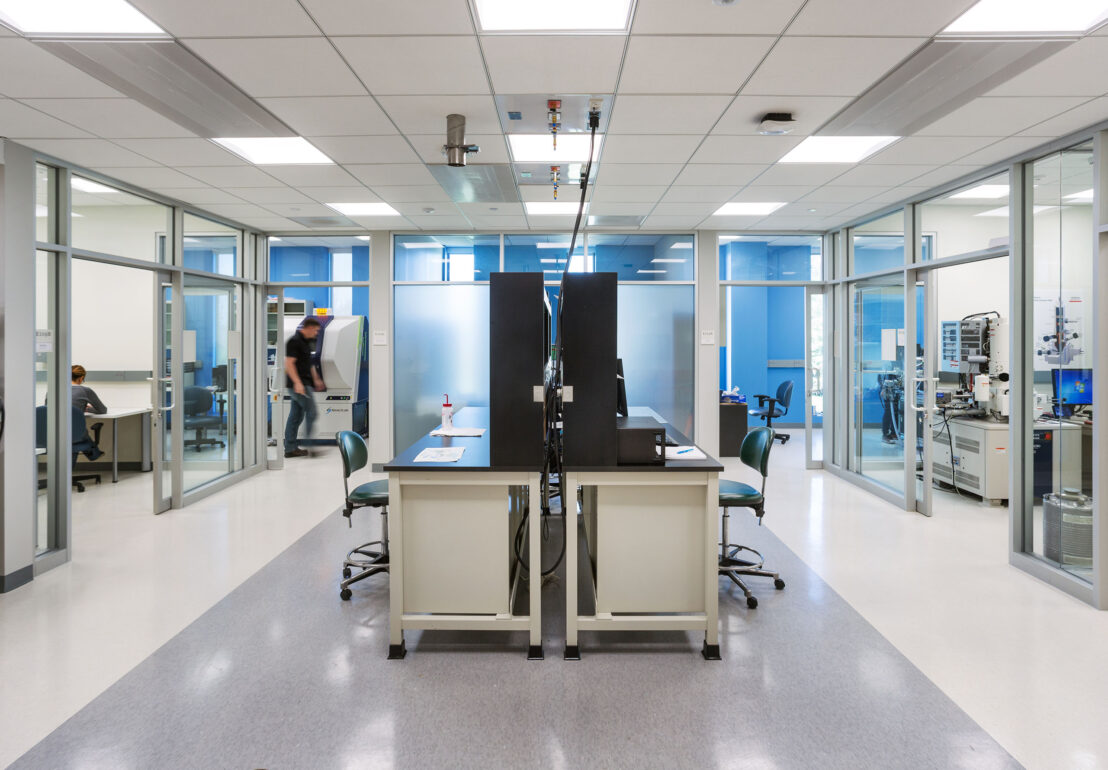Innovations in lab design
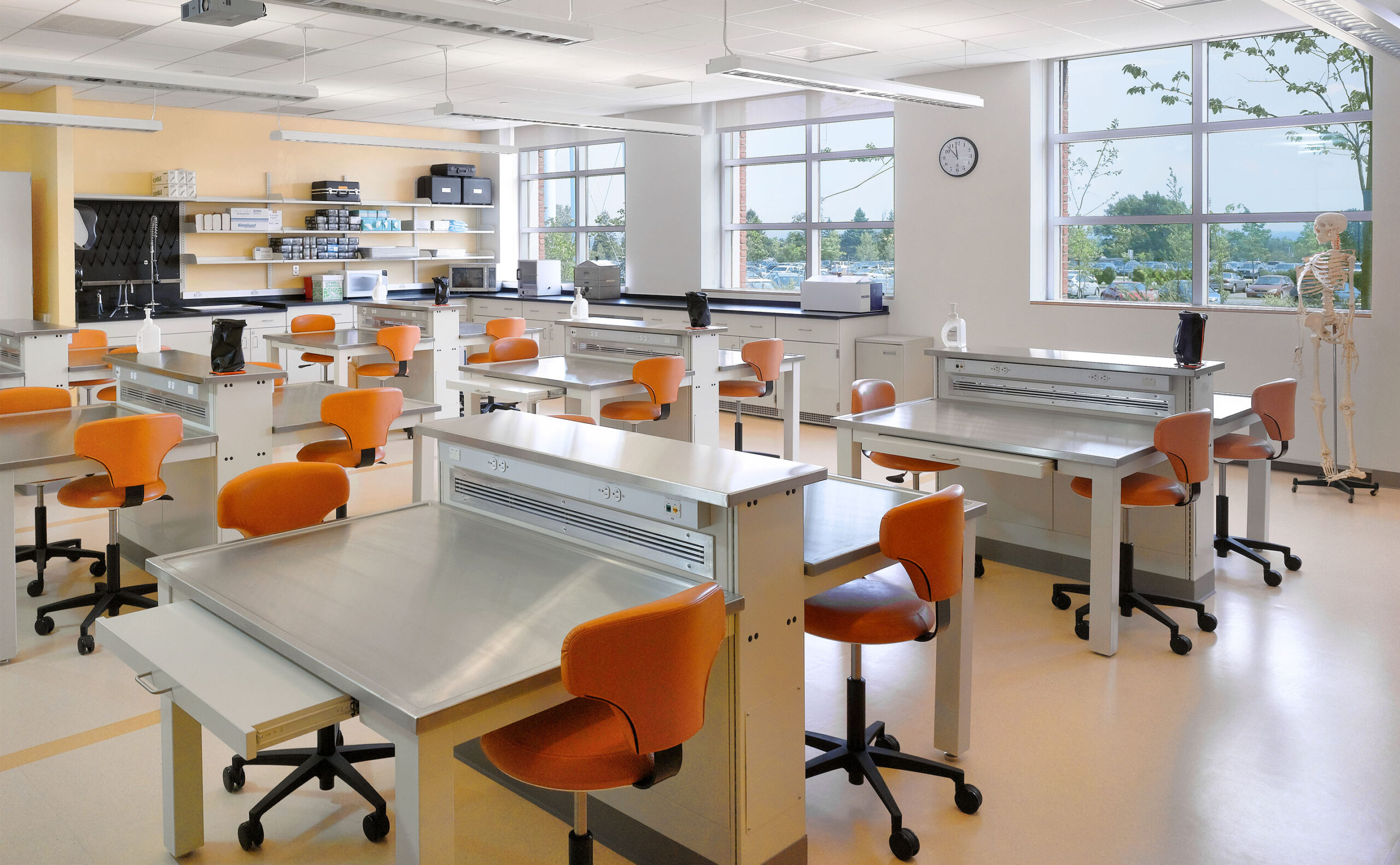
University of Vermont, Jeffords Hall, Anatomy and Physiology Lab
- Tags
- Design for discovery
Ellenzweig has been at the forefront of research and teaching lab design for colleges and universities for more than 50 years. Our collaborative process in working with faculty and staff, combined with our ongoing interest in creating innovative learning environments, has resulted in a number of innovations in lab design that meet specific safety, pedagogical, and technical needs and promote completely new ways of teaching and learning.
Featured here are some of the innovations we have been responsible for over the years:
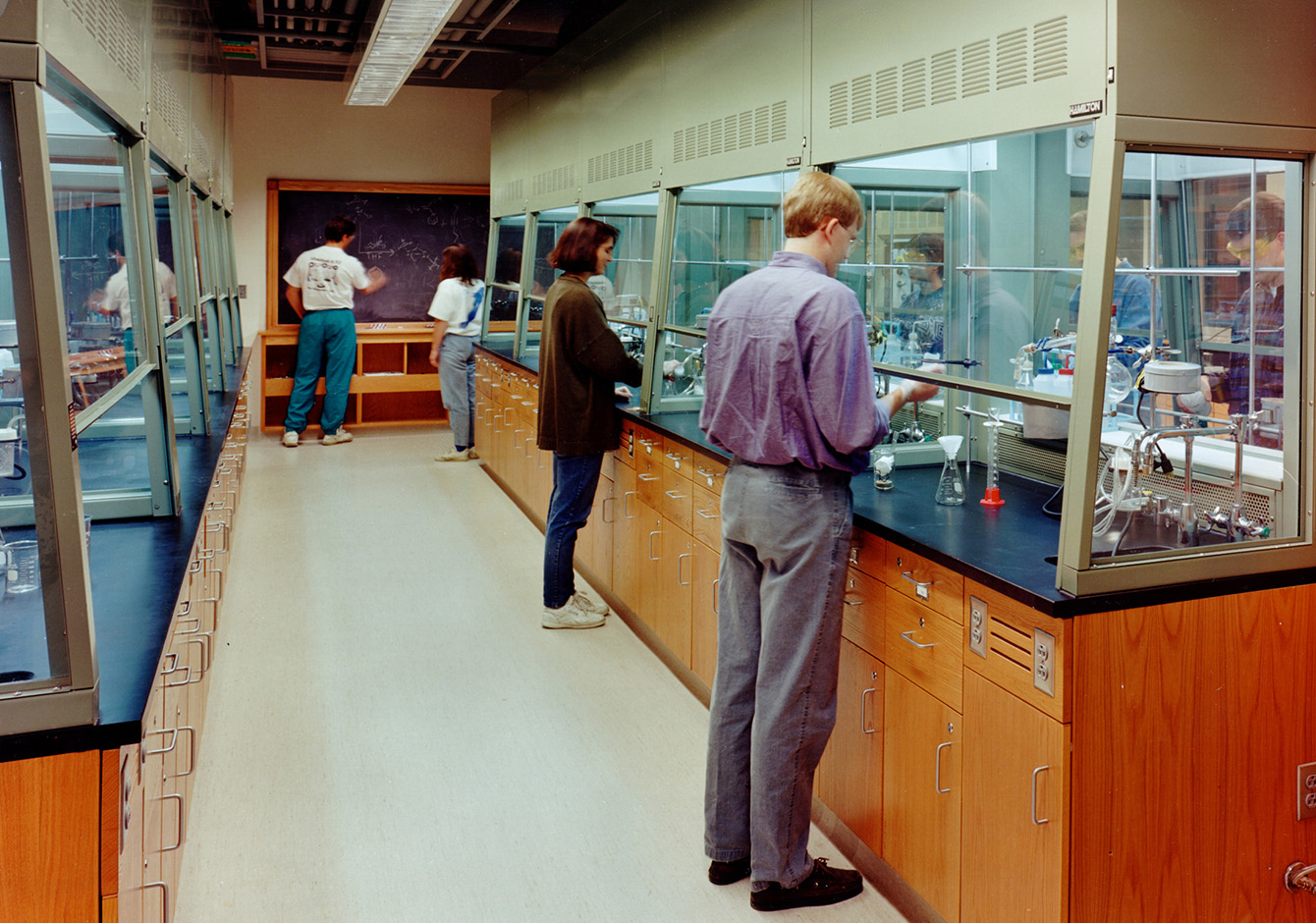
Dartmouth College, Burke Laboratory Building, first all-glass fume hood, 1992
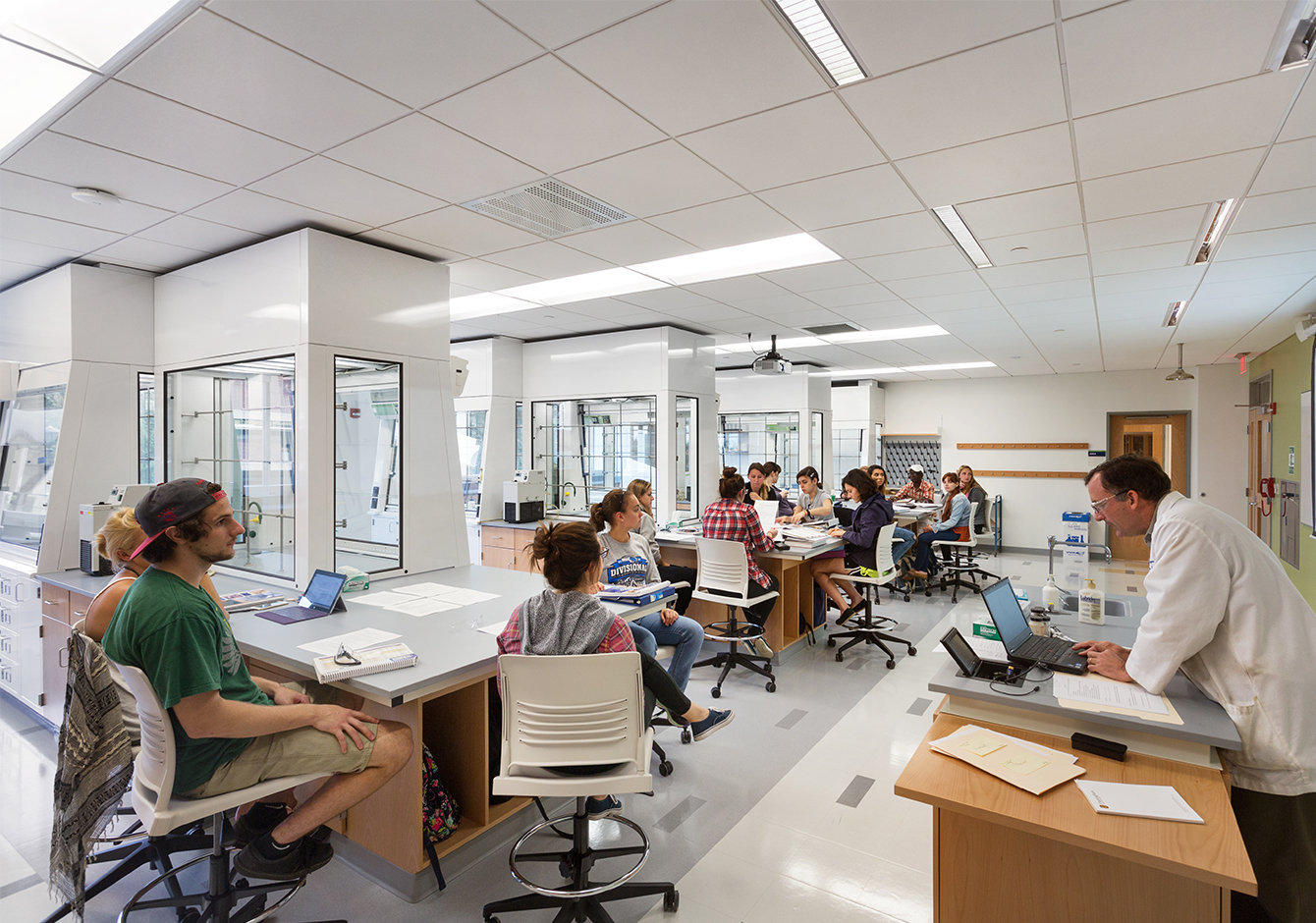
Framingham State University, Science Complex, all-glass fume hood, 2017
Glass-walled fume hoods. Ellenzweig worked with Dartmouth College and Hamilton Industries to develop the very first glass-walled fume hood to promote greater visibility and safety in chemistry teaching labs, especially in organic chemistry teaching labs, which feature a large number of fume hoods for student work.
This photo dates from the time of the project, completed in 1992. Upon its development, the all-glass fume hood became an industry standard, as seen in the image from Framingham University.
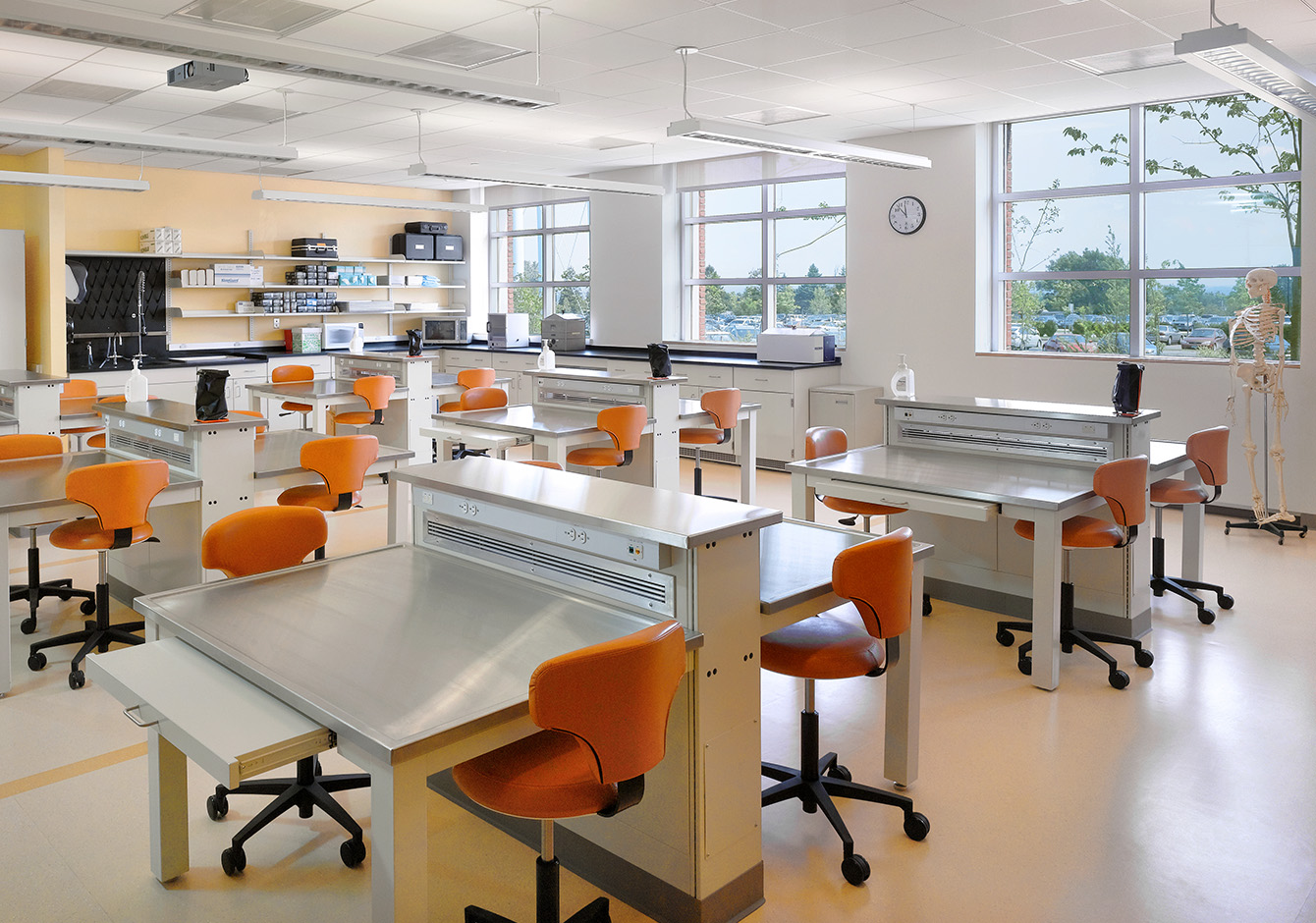
University of Vermont, Jeffords Hall, Anatomy and Physiology Lab
Downdraft tables for Anatomy and Physiology. Ellenzweig faced a challenge working with the University of Vermont in the design of teaching labs for the Jeffords Plant Sciences Building, completed in 2010. The goal was to provide a safe, properly ventilated environment for students working with large tissue samples preserved in formalin. Nothing available on the market from the usual suppliers met the need. The Ellenzweig team worked with the faculty, the University’s Environmental Health and Safety personnel, and a lab caseworker vendor to develop a custom-designed workstation. The workstation for two students provides integrated, horizontal laminar flow exhaust with pull-out surfaces for student write-up.
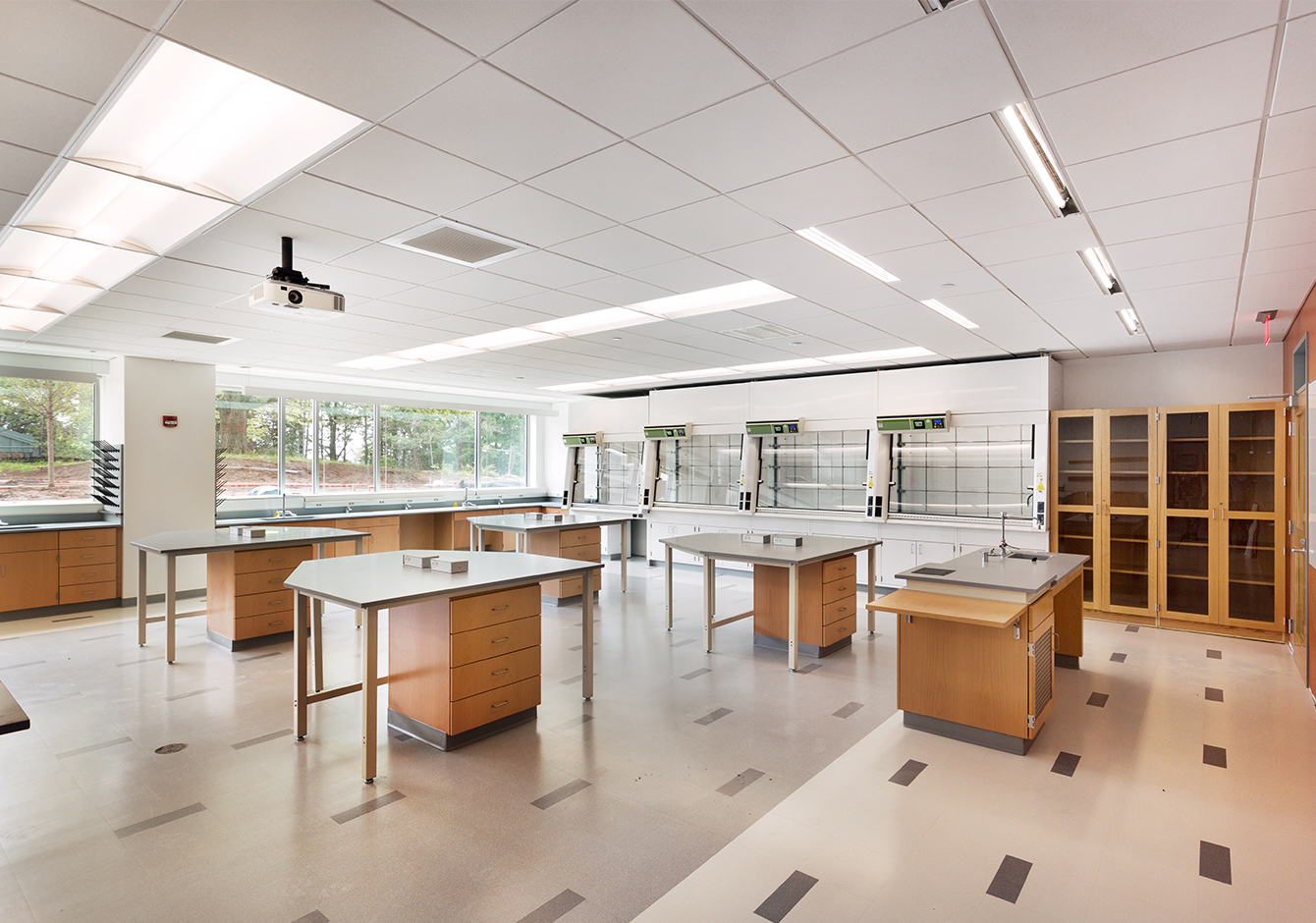
Framingham State University, Science Complex, Chemistry Teaching Lab
Filtering fume hoods. Ellenzweig was a pioneer in the use of filtering fume hoods in chemistry teaching labs to reduce energy while providing a safe environment for student work. Ellenzweig worked with Marywood University in renovating their chemistry labs, and subsequently, Framingham State University in the design of a new Science Complex that included, at the time, the largest installation of filtering fume hoods in the country.
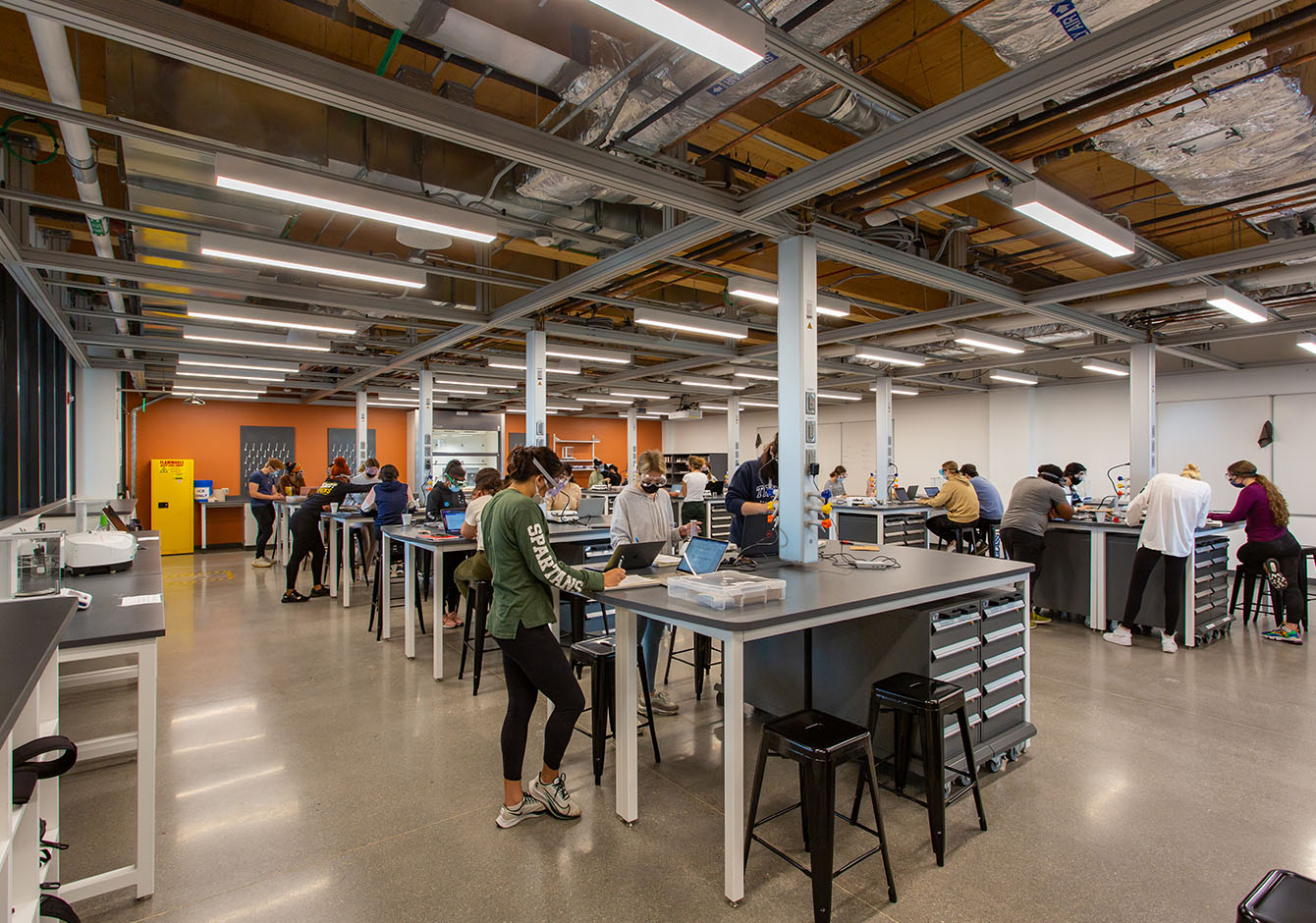
Michigan State University, STEM Complex, flexible overhead services and casework
Highly flexible lab casework systems. Ellenzweig collaborated with Michigan State University and Waldner casework supplier to design revolutionary new teaching labs in their new STEM Complex. This system permits the complete reconfiguration of the labs, including lab tables and service drops. Michigan State’s STEM Complex, completed in 2020, marked the very first use of this flexible lab system in a teaching lab project in the United States.
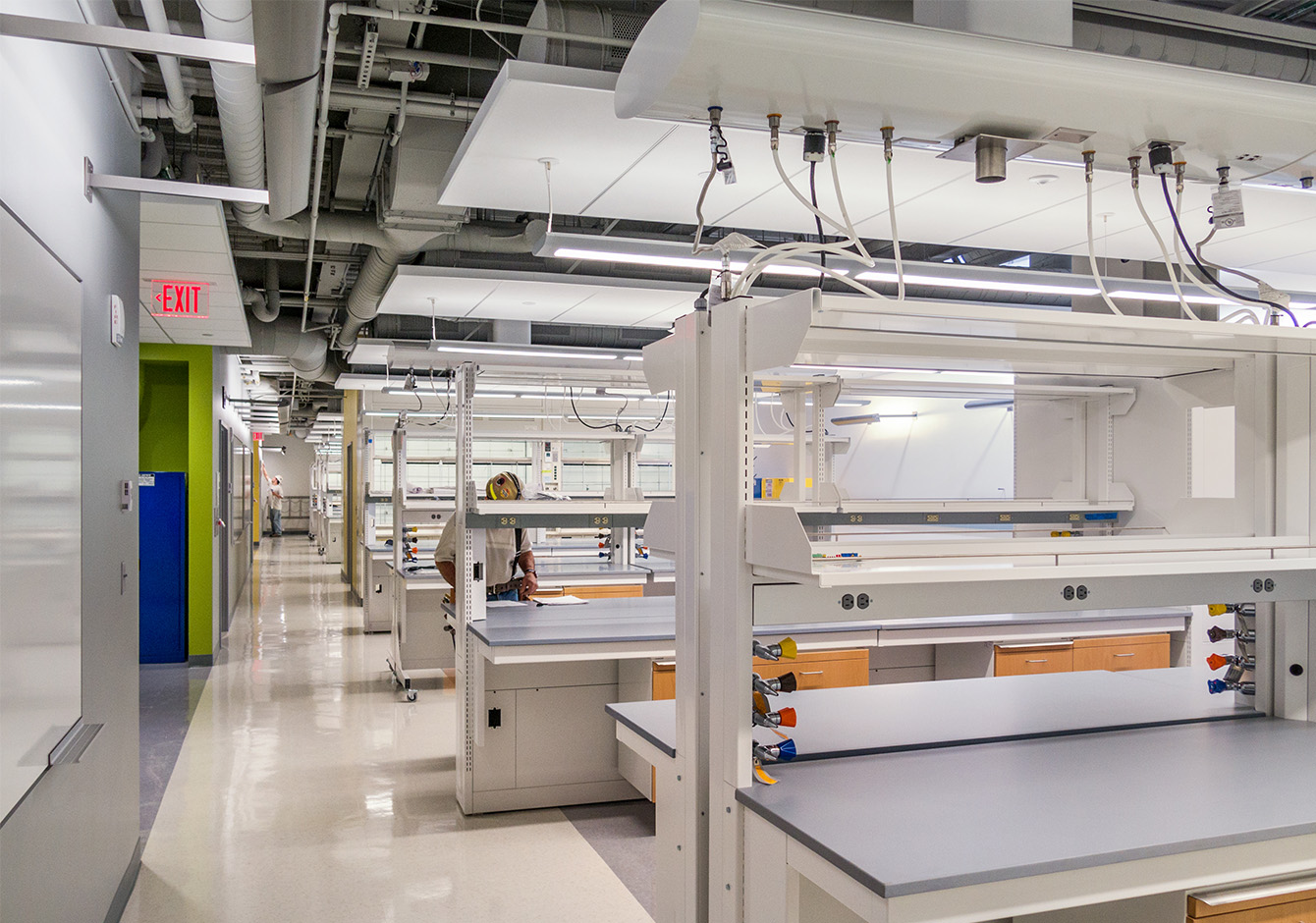
Yale University, Energy Sciences Center Renovation
Multipurpose Lab Services Carrier. Ellenzweig has collaborated with several academic institutions in the design of an integrated lab services carrier. This highly versatile ceiling-mounted system has been designed and engineered to accommodate all types of piped and wired lab services and movable exhaust ports. The lab services carrier can be equipped with a great variety of attachments to enable a virtually unlimited number of research lab instrument connections.
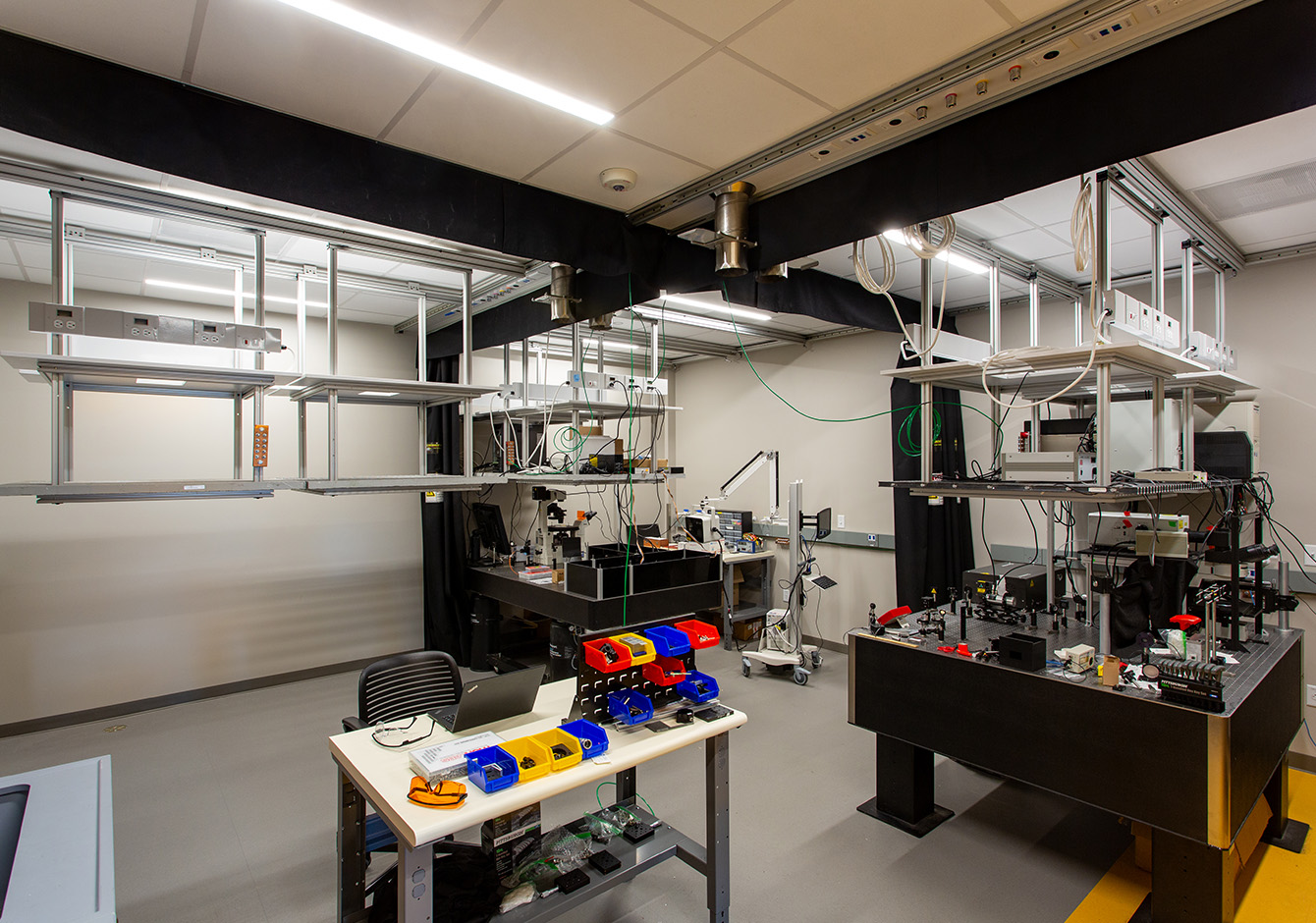
University of Maine, Ferland Engineering Education and Design Center, overhead mobile equipment rack
Overhead Mobile Equipment Rack (OMER). On several recent projects, Ellenzweig has developed an overhead mobile equipment rack to provide enhanced flexibility. This equipment rack is mounted on an aluminum rail system that allows movement in all four plan directions and can be adjusted vertically as well. The rack system can be equipped with different types of piped and wired lab services, and can accommodate upwards of 300 pounds of research instrumentation. The mobile equipment rack, combined with the multipurpose lab services carrier, provides a highly flexible research lab environment capable of accommodating a wide variety of lab and equipment configurations without the need for construction contractor intervention.
In all our projects, we have sought to advance the state-of-the-art for the particular branch of science education involved to develop new designs and concepts that allow faculty to achieve their changing pedagogical goals.
